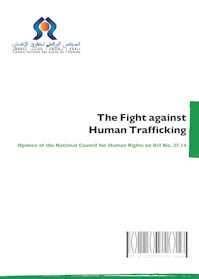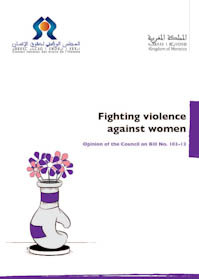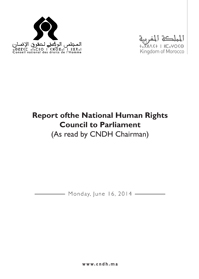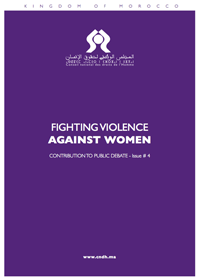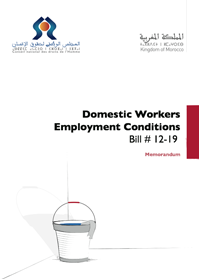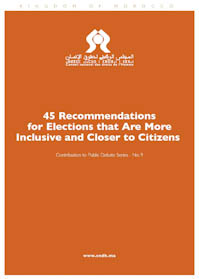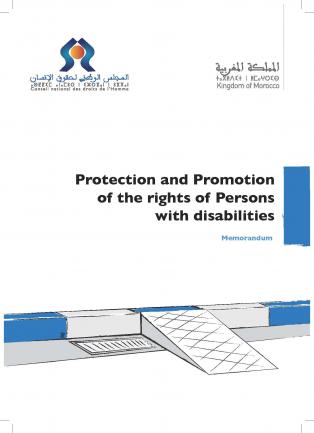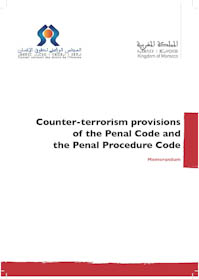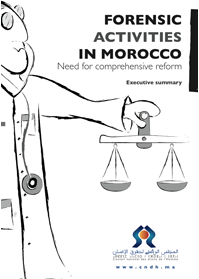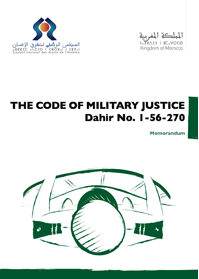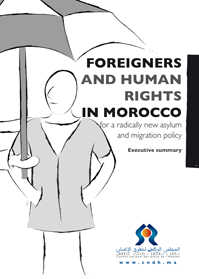Development of Human Rights on the International Level
In this article, I am not going to talk about the history of human rights; rather I will address their main features and show some aspects of their development at the international and national levels.The "right" is an international concept which has been defined by the international community, mainly at the United Nations as a reaction to the destructive aftermaths of World War II. This term did not represent a new concept in the history of humanity but it took different forms. It was a result of the efforts of humanity trying to answer questions about injustice, suffering and oppression and the refusal of a lifestyle that led to such a suffering. Slavery, authoritarianism, destructive wars, exploitation of children and workers, mass massacres and discrimination based on ethnicity, poverty and torture are all old events. Fighting against this injustice goes back also to an old age.
The term “human rights” refers to all the rights that all individuals should enjoy because they are human being. These rights are granted by no one, and do not depend on the state, who shall neither grant nor ban them. Legal systems vary from one state to another. However, human rights are entitlements which do not pose any ambiguity in international law. Therefore, each state must bring its legal system into compliance with the international human rights law. Human rights are an expression that has recently been used. "Rights" were mentioned without linking them with human being. Human rights are the result of belonging to mankind.
I. Historical overview of the development of the idea of human rights
The idea of human rights was born and evolved with the development experienced by humanity through various stages and in different places. Human rights are now provided for in international conventions and covenants.
The Christian faith highlighted the principle of human dignity as a divine gift. The idea of natural law was born to underline the rights of individuals and resist injustice. It underlined that individuals have natural rights simply because they are human being: the right to life, liberty and property. The fact that individuals belong to a group seeks to confirm and guarantee their rights and not to make concessions in this regard. The State shall therefore preserve and protect their rights.
The idea evolved into the conception of a theory of social pact by virtue of which individuals give up a portion of their absolute freedom in order to establish an authority that would organize and protect them. The other freedoms remain outside the scope of State; otherwise, it would lose its reason for existence and therefore infringe the consensual basis of its authority.
With the advent of Islam, major historical changes occurred at all levels. The message of the Koran and the Sunna of the Prophet highlight human dignity and the prohibition of slavery. Islam established principles and standards to ensure human dignity, equality, non-discrimination, cooperation among peoples, freedom of worship, the right to life and liberty and the principle of social solidarity.
In light of all the ideas and knowledge mentioned above, the first pacts on human rights emerged in some countries. In Britain, the Magna Carta was issued in 1215, and a habeas corpus in 1688. In the United States, there was the Declaration of Independence in 1766, and in France, the French Declaration of Rights of Man and the Citizen in 1789 was enacted.
Following the era of industrialization in Europe and the resulting problems of labor, a social and economic democratization appeared causing an impact on human rights, including the 1848 French Constitution and other European constitutions, calling on the State to undertake to protect, educate and assist citizens.
During the two wars, the constitutions of some European countries stipulated the right to employment, social security, protection of setting up trade unions and certain family rights. After World War II, several countries in Eastern Europe enacted constitutions on the socialist model. During this same period, several third world countries gained independence and adopted modern constitutions, including articles on human rights on the basis of the latest trends in this area. The new constitutions of the countries of Western Europe also developed and ensured the protection of human rights. Human rights are not individual rights but collective ones. They can only be achieved collectively, such as rights of the family, of linguistic minorities and regional communities. A progress towards the practice of group rights has been noticed, such as the practice of collective worship, the right to form trade unions, the right to strike and freedom to form political parties.
II. Human rights law
The Universal Declaration of Human Rights was promulgated on December 10, 1948. The Declaration stipulates a number of rights such as the right to life, liberty, dignity, equality before the law, assembly, movement and freedom of worship... They are all individual rights. The Declaration calls on countries to respect and not to infringe them because they are natural rights which are not granted by an authority. Thus, any violation of these rights must be condemned and it will be immediately requested from the State to redress it and compensate the victim.
In 1948, the UN General Assembly took a historic decision. It adopted the Declaration as an international benchmark for defining the rights which should be respected and consolidated. It provides for justice, equality, peace and international security. Thus, an international human rights committee was established in 1946 by the United Nations Economic and Social Council, charged with developing principles and standards that form the essential basis of international instruments of human rights. It ended its mandate with a proposal of a draft to the UN General Assembly in September 1948 (2). This was the first part of the international bill and was the first international reference in the modern era to consolidate human rights for all humanity (3).
The Declaration was accepted by several members of international community, which attached a paramount importance to the principles of this Declaration. It had a positive impact on the constitutions and laws of the nations. Activists called for incorporating the Declaration articles in their constitutions and laws. They became a standard of the supremacy of the constitution. The concept of the international human rights was translated into internationally recognized human rights covenants. All the international instruments of human rights (the Universal Declaration and the two international covenants) are only a starting point for these covenants (4). This bill is the result of lengthy and serene discussions within the United Nations. All the work done by the international movement of human rights emanates from the UDHR.
Other international instruments of human rights emerged later: the International Covenant on Civil and Political Rights and the International Covenant on Economic, Social and Cultural Rights adopted by the United Nations in 1966. These are two legally binding international conventions. The countries which ratified them undertake to respect and consolidate the rights recognized in them (5).
In the initial stages, governments played a key role in formulating concepts of human rights. NGOs play now an effective role in the development of concepts and mechanisms of human rights at international, regional and local levels. The protection of human rights is not limited to the organization and classification of rights. The process of monitoring the implementation of these covenants is another very important step in the field of international cooperation, without which it would be impossible to achieve the objectives expected (6).
III. Guarantees of protection of human rights
In the declaration of human rights, the old systems drew up practical guarantees to respect and protect these rights. These guarantees took several forms in which the principle is the supremacy of articles stating human rights on the remaining articles. They are no longer mere statements without any legal effect found in the preamble of the constitutions. They are recognized as of binding value although some constitutional jurists continue to deny that they reach the level of ordinary laws. Some of those who recognized this binding value see that these rights go beyond the constitution itself. Therefore, they should be taken into account by the ordinary legislator and constitutional one. Others said that they amounted to the Constitution and therefore they are binding for the ordinary legislator and administration.
For example, the French judiciary distinguished between the articles found in the declarations of human rights and in the preamble of the Constitution which it regarded as ordinary laws on the one hand, and articles in the body of the Constitution which it considered as constitutional laws on the other(7).
The guarantees of protection of human rights are translated into the following components:
- The separation of powers: legislative, executive and judicial;
- A constitutional monitoring to ensure that laws are in conformity with the Constitution;
- A control of legality in order to ensure that laws, regulations and decisions fall within the scope of the Constitution and laws.
- The creation of the post of Parliamentary Commissioner, the Public Prosecutor in charge of Human Rights, Ombudsman or any commission on human rights;
- Direct control by the people in democratic systems through the referendum, the opposition, dismissal of MPs, the head of state and dissolution of the houses of representatives;
- Indirect control by the people through the media, political parties, unions and associations;
- The creation of a court of human rights as the European Court of Human rights in Strasbourg.
Human rights are universal legal guarantees protecting individuals and groups against any conduct or negligence impairing the fundamental freedoms and human dignity.
IV. Classification of human rights
Amid the developments occurring in human rights, many views emerged in an attempt to classify the fields of human rights, through analyzing the phenomenon of their development as an idea and translating them into binding international instruments in all economic, social, political, civil, cultural and environmental fields. Three stages have been noticed:
First step: focus on individual rights
It stretches from 1945 to 1960 during which the UN, the UDHR and other agreements focused on individual rights by placing the individual versus the State.
Second step: interdependence of individual rights and collective rights
The protection of the individual has never stopped despite the challenges and difficult situations to address the issues of refugees, stateless persons, women and the disabled. During this stage, the rights of peoples were linked to human rights. This was reflected in the 1960 UN Declaration on the Granting of Independence to Colonial Countries and Peoples. According to this declaration, colonialism is a cause of underdevelopment and a denial of human rights. This interdependence between the rights of peoples and human rights exists in the two international covenants of 1966. The first article of the two texts provides for the right of peoples to self-determination. By virtue of this right, they choose their political and social system. They stipulated that all peoples may, for their own ends, freely dispose of their natural wealth and resources (8).
The ideological balance (clashes between the two blocks) played a role in setting the stage for individual and group rights. The United Nations adopted the right of peoples as an essential part of human rights by denouncing racism in 1963 and 1965, racial discrimination (apartheid) in 1973.
Third step: Balance between rights
This stage was characterized by a balance between the rights by upgrading civil and political rights of third world countries. It was also stressed that human rights were indivisible and that the principles of human rights were universally recognized (9).
Since the promulgation of the Declaration of the Right to Development in 1986 with a majority of 146 votes, the "right to development" was seen as a right of the third generation of human rights in addition to the right to peace, the right to a healthy environment and right to use common human heritage.
On this basis, civil and political rights were regarded as the first generation because they were developed in the 18th century, and they constituted a background for the French Revolution. The economic, social and cultural rights represent the second generation. They were stipulated in the 19th and 20th century under the influence of socialism. They include equality, right to work and social security. The third-generation rights or the rights of solidarity emerged in different circumstances and different contexts. These rights fell within the remit of the State, such as the environment, peace, development, communication and the common heritage of mankind (10).
Human rights should be treated on an equal footing. The 1948 UDHR clearly states that economic, political, civil, cultural, social interlinked. The international community emphasized this principle in the Declaration of the Right to Development in 1986, the 1993 Vienna Declaration and Programme of Action and the Convention on the Rights of the Child, which have been almost universally ratified.
Human rights are:
- Universal, inherent to the person since his/her birth;
- Based on the inherent dignity and equality of human being;
- Equal, interdependent and indivisible;
- Inalienable and binding;
- Internationally guaranteed;
- Legally protected.
Human rights are interdependent and indivisible. The principle of indivisibility means that all individuals are equal. Respect for and protection of economic, social and cultural rights should be made on the same footing with civil and political rights. The principle of interdependence of rights emphasizes that the exercise of one human right can not be done independently of other rights. (11)
By Sabri Mohammed, Head of the CCDH Division of Victim Assistance
For references, see the Arabic version






